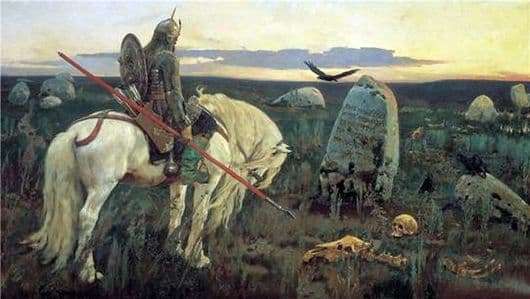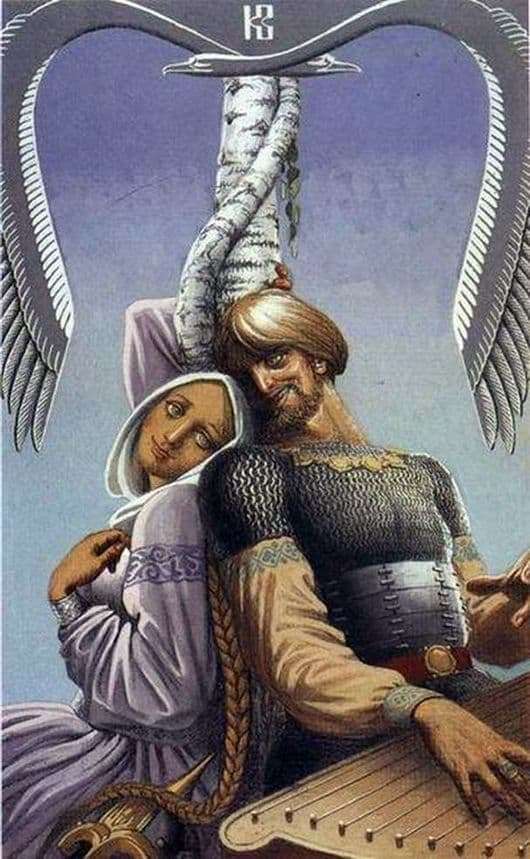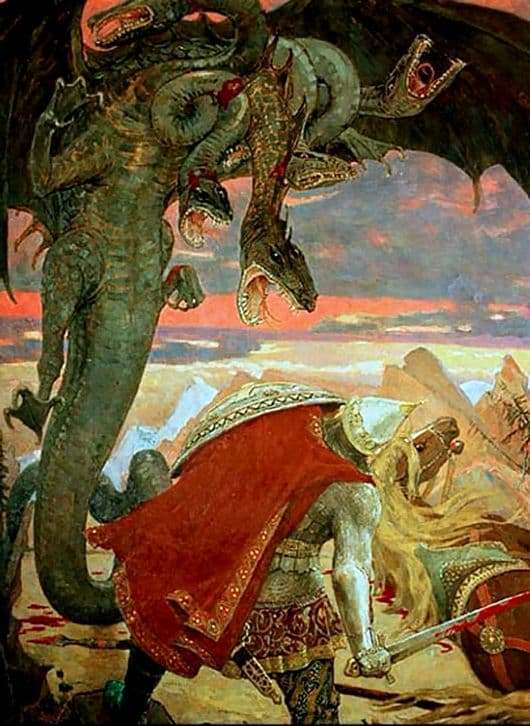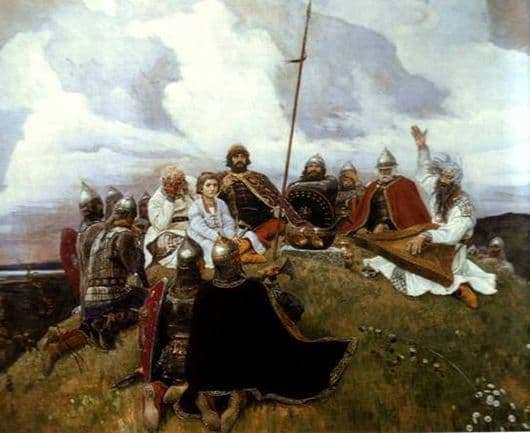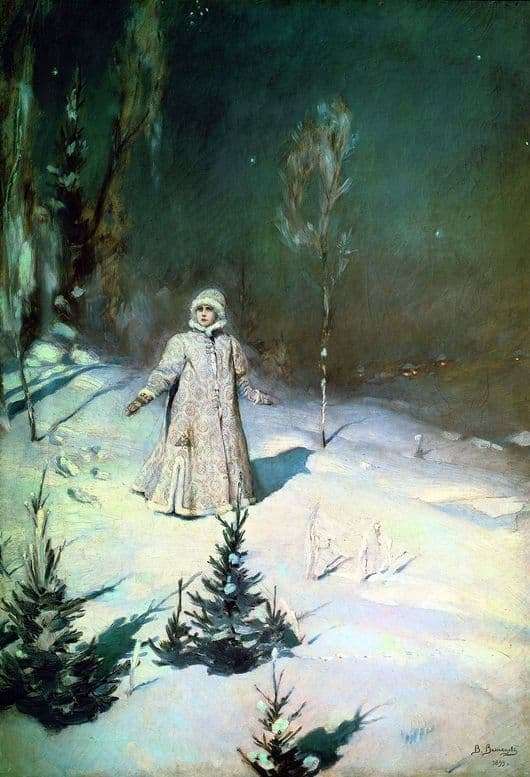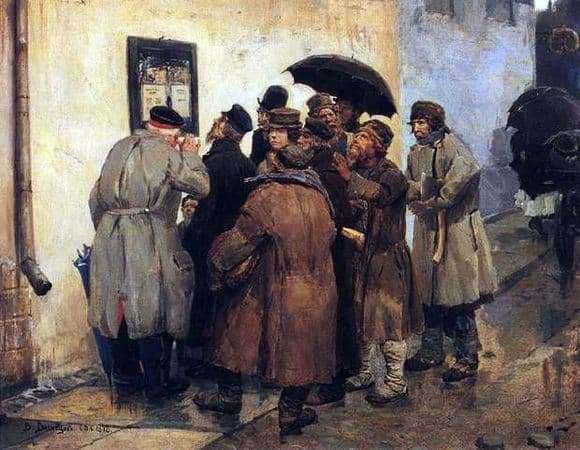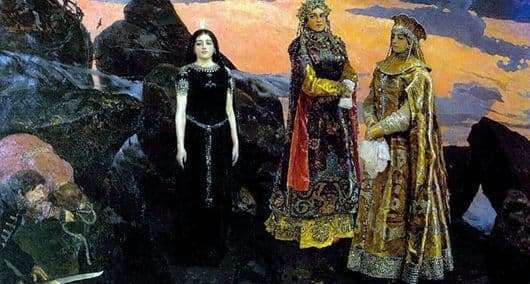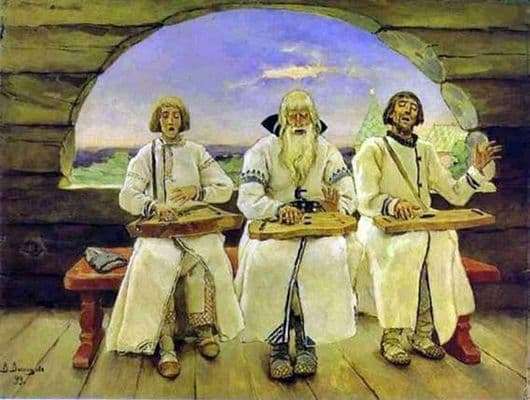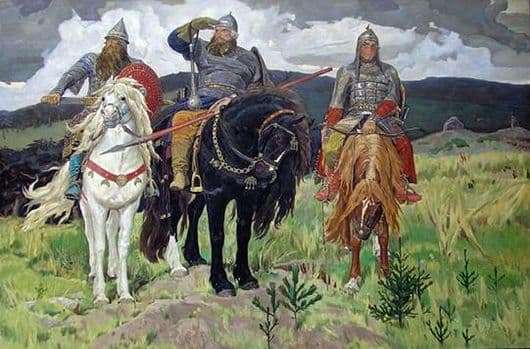
Above this picture – the real name of which is just simply “Warriors”! – Vasnetsov worked especially long. This is understandable. It was important for the artist to depict three completely different types of Russian knights, and three such different characters needed a carefully drawn, but also different weaponry. For example, in the hand of Muromets we see a mace, or a combat (on an iron or iron-bound handle) six-pole, and of such size. – and, consequently, of weight – that the slim Alyosha Popovich would hardly have kept, let alone deftly wielding them in battle.
Horse knights were armed with the standard: a sword, spear, shield, something for the “soul”, according to the character of the warrior – or a club, or a few darts, but according to Vasnetsov’s “Heroes” this set of weapons is distributed by the artist himself. Dobrynya and Popovich were deprived of copies, and Alyosha could not figure it out behind his back, whether it is still a shield, or – the second tula (protected quiver) with arrows. In the latter case, most of the popular jokes about this masterpiece of painting are fully justified. But that’s what a masterpiece is – to get a new life in folk art.
But Vasnetsov prevailed over the critics (both modern and contemporary) in another question – about the age of Dobryni: the artist was reproached that he is not young. But everything in the picture is true: Dobrynya is not too young by the epics, and the real Dobrynya Nikitich from the chronicles made a bloody coup in favor of the future Holy Prince Vladimir, and more than in adulthood. Well, with amazing skill, the horses created on the canvas are beautiful and correspond to the weapons and even the heroes’ characters. But in addition to so different figures and figures of the heroes themselves, “speaking” with the audience a huge role in the picture plays and the landscape behind them.
The wooded hills in the background are traced in detail, still Russian, judging by the fir-trees, and grassy ones in the front. This is apparently the Wild Steppe, where the warriors and carried their watch. But there, where the Russian knights set foot, there is my native land, look at it – young spruce shoots are already turning green next to the horses’ hooves. There was even a version that warriors are the embodiment of three different, but fraternal peoples: Russian (Ilya), Ukrainian (Dobrynya) and Belarusian (Alyosha Popovich). But we will leave this version of Soviet art historians for more friendly times.
Vasnetsov’s masterpiece is magnificent without the “nationalistic” one, as it would be answered now by this assumption, the subtext. Ostroukhov Ilya judging by the Christmas trees, and grass – on the front. This is apparently the Wild Steppe, where the warriors and carried their watch. But there, where the Russian knights set foot, there is my native land, look at it – young spruce shoots are already turning green next to the horses’ hooves. There was even a version that warriors are the embodiment of three different, but fraternal peoples: Russian (Ilya), Ukrainian (Dobrynya) and Belarusian (Alyosha Popovich). But we will leave this version of Soviet art historians for more friendly times. Vasnetsov’s masterpiece is magnificent without the “nationalistic” one, as it would be answered now by this assumption, the subtext. Ostroukhov Ilya judging by the Christmas trees, and grass – on the front.
This is apparently the Wild Steppe, where the warriors and carried their watch. But there, where the Russian knights set foot, there is my native land, look at it – young spruce shoots are already turning green next to the horses’ hooves. There was even a version that warriors are the embodiment of three different, but fraternal peoples: Russian (Ilya), Ukrainian (Dobrynya) and Belarusian (Alyosha Popovich). But we will leave this version of Soviet art historians for more friendly times. Vasnetsov’s masterpiece is magnificent without the “nationalistic” one, as it would be answered now by this assumption, the subtext. Ostroukhov Ilya There was even a version that warriors are the embodiment of three different, but fraternal peoples: Russian (Ilya), Ukrainian (Dobrynya) and Belarusian (Alyosha Popovich). But we will leave this version of Soviet art historians for more friendly times. Vasnetsov’s masterpiece is magnificent without the “nationalistic” one, as it would be answered now by this assumption, the subtext. Ostroukhov Ilya There was even a version that warriors are the embodiment of three different, but fraternal peoples: Russian (Ilya), Ukrainian (Dobrynya) and Belarusian (Alyosha Popovich). But we will leave this version of Soviet art historians for more friendly times. Vasnetsov’s masterpiece is magnificent without the “nationalistic” one, as it would be answered now by this assumption, the subtext. Ostroukhov Ilya
Description of the painting by Victor Vasnetsov “Three heroes”
